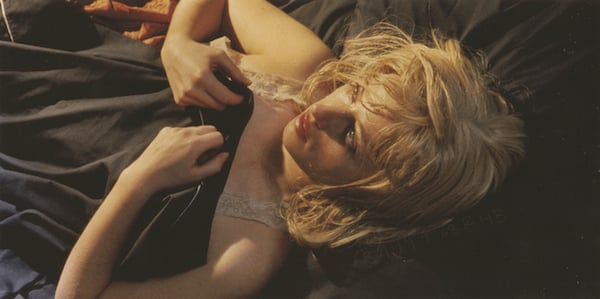

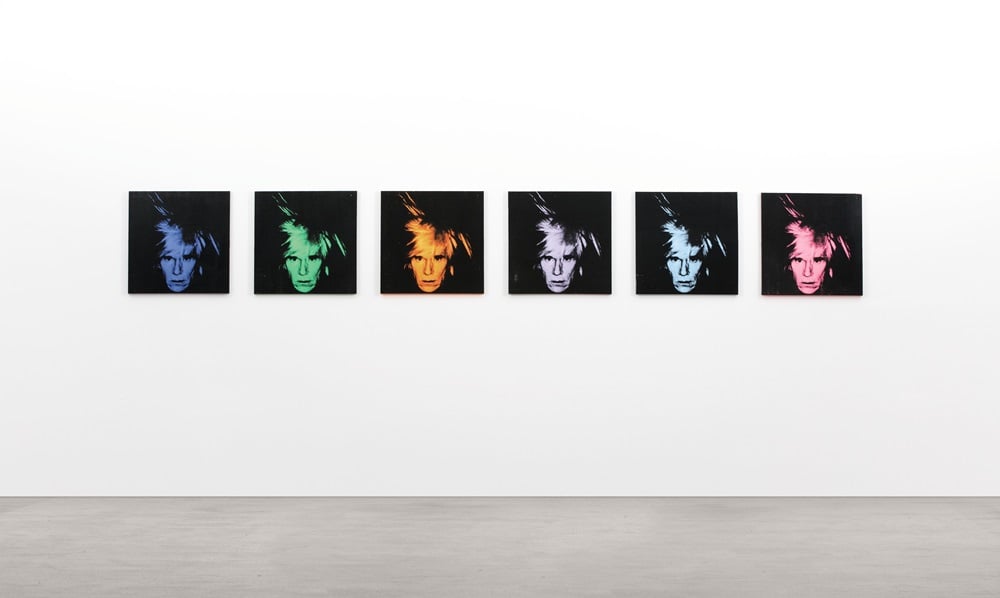
Andy Warhol, Six Self Portraits (1986) sold for $30 million, above its low estimate of $25 million.
Art experts and collectors barely had time to catch their breath. Twenty-four hours after Christie’s held its record-smashing $745 million sale of postwar and contemporary art auction, it was time for all eyes to turn to Sotheby’s.
Tonight’s sale took in $364.4 million as compared with estimates of $339.6–478 million. Of 79 lots on offer (two, including a Cindy Sherman, were withdrawn before the sale), 67 sold, representing 85 percent of the lots. By value the sale realized 87 percent.
Obviously the house had some tough competition with the levels hit the previous night. Overall the sale was solid, even as the number of buy-ins and tame bidding for some top lots was a bit surprising,
Oliver Barker, Sotheby’s deputy chairman of Sotheby’s Europe and senior international specialist of contemporary art, did an excellent job in his first time serving as replacement for Tobias Meyer, Sotheby’s former worldwide head of contemporary art.
Barker kept the mood light and the pace brisk in the packed salesroom. A number of boldfaced names were in attendance, including Mary-Kate Olsen, sitting near the front of the salesroom and sporting Ray-Ban sunglasses, her fiancé Olivier Sarkozy keeping a protective arm around her throughout the night. Designer Marc Jacobs was seated prominently in the front row though we didn’t see him bid on anything.
The top lot was Andy Warhol‘s Six Self Portraits (1986), which was estimated at $25–35 million; it sold for $30 million. It was won by Sotheby’s specialist Cheyenne Westphal, bidding for a client via telephone. The 1986 suite of multicolored self-portraits was acquired from London’s Anthony d’Offay Gallery the year it was created and has been in the same private collection since then. The work represents “the undiluted quintessence of the brand of Andy Warhol: the perfect manifestation of his declaration, ‘If you want to know about Andy Warhol, then just look at the surface of my pictures . . . and there I am; there’s nothing in between.’”
The second highest price was for a monumental Gerhard Richter abstract. The 1988 work sold at $28.7 million on an estimate of $25–35 million. (It sold at Sotheby’s more than a decade ago, in November 2002, for $2.2 million on an asking price of $1–1.5 million).
The high price perhaps belies the sparse bidding between two Sotheby’s specialists on behalf of clients. The hammer came down quickly at $25 million, which happened to be the low estimate. (It’s likely there had been some nervousness in the hours leading up to the Sotheby’s sale. A major Richter abstract, Besen (1984), was one of the rare works stranded on the auction block at last night’s otherwise stellar sale at Christie’s. It was estimated at $8–12 million but never got anywhere near the low estimate and was bought in.)
The buyer of Jeff Koons‘s Popeye (2009–2011) was none other than top collector and Las Vegas mogul Steve Wynn. Sailor man meets casino man. The sculpture sold for $28.2 million on an estimate of approximately $25 million. Still, Wynn didn’t have to fight hard. There were at the most two other bids, and seemingly little competition for the piece before it almost immediately went down at a hammer price of $25 million to Sotheby’s specialist Charles Moffett, bidding for Wynn. Perhaps such an estimate for the gleaming six-and-a-half foot tall heroic statue depicting the swarthy cartoon sailor, was a bit lofty considering it’s barely five years old, and had been acquired by its consignor in 2011.
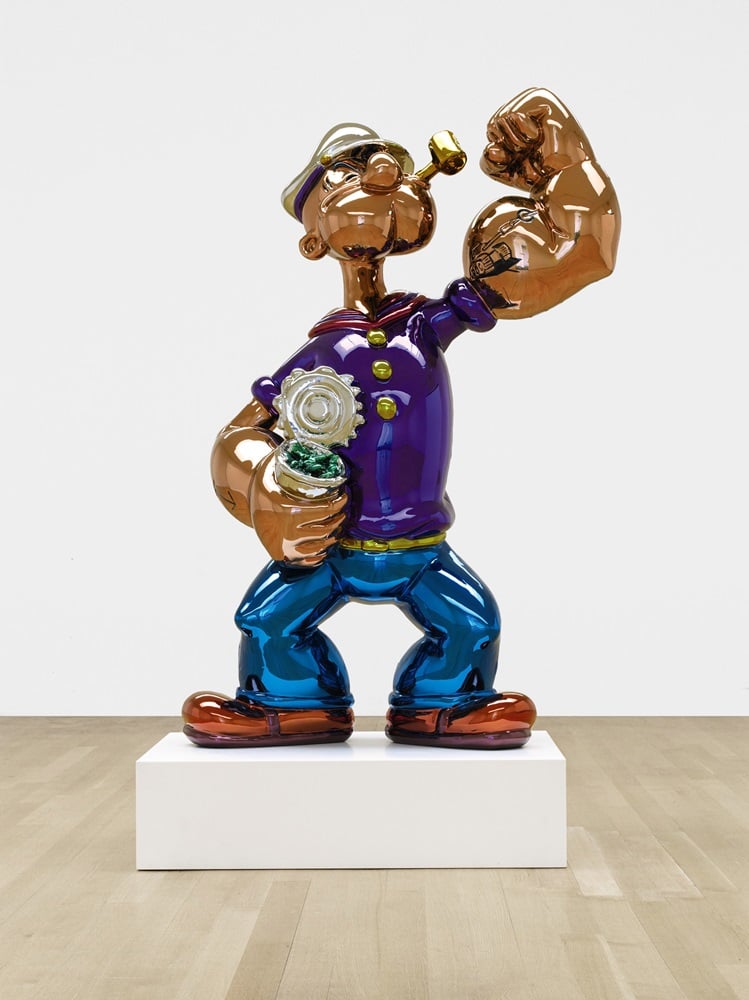
Jeff Koons’s Popeye (2009–2011) sold for $28.2 million, topping it is estimate of approximately $25 million.
Photo: Courtesy Sotheby’s.
Tonight’s sale started a bit earlier than the usual 7 p.m. evening time slot, with a group of 19 cutting-edge works from the collection of hedge fund manager Adam Sender. Entitled “Ahead of the Curve,” the group featured works by Matthew Barney, Urs Fischer, Glenn Ligon, Sarah Lucas, Rosemarie Trockel and Lucien Smith, and Martin Kippenberger.
All lots sold, totaling $44,591,000, well above the $21.2–30 million estimate, and six artist records were set with 84 percent of the lots bringing prices above the high estimate Despite that they were not at the same price points as some of the eight-figure works on offer, Sender’s consignments attracted serious interest and competition, evidenced by the lively bidding in the room.
This was especially true for one of the highest estimated lots, Rosemarie Trockel‘s Untitled (1985–88), knitted wool in two parts, which was expected to take $1.5–2 million and wound up selling for $4.9 million, a new artist record. It was won by specialist Westphal, and the competitive underbidder who went head to head with her was a man seated in the salesroom right next to adviser Todd Levin (who had helped Sender assemble a large part of this collection). Sender himself was reportedly in a Sotheby’s private skybox taking in the sale.
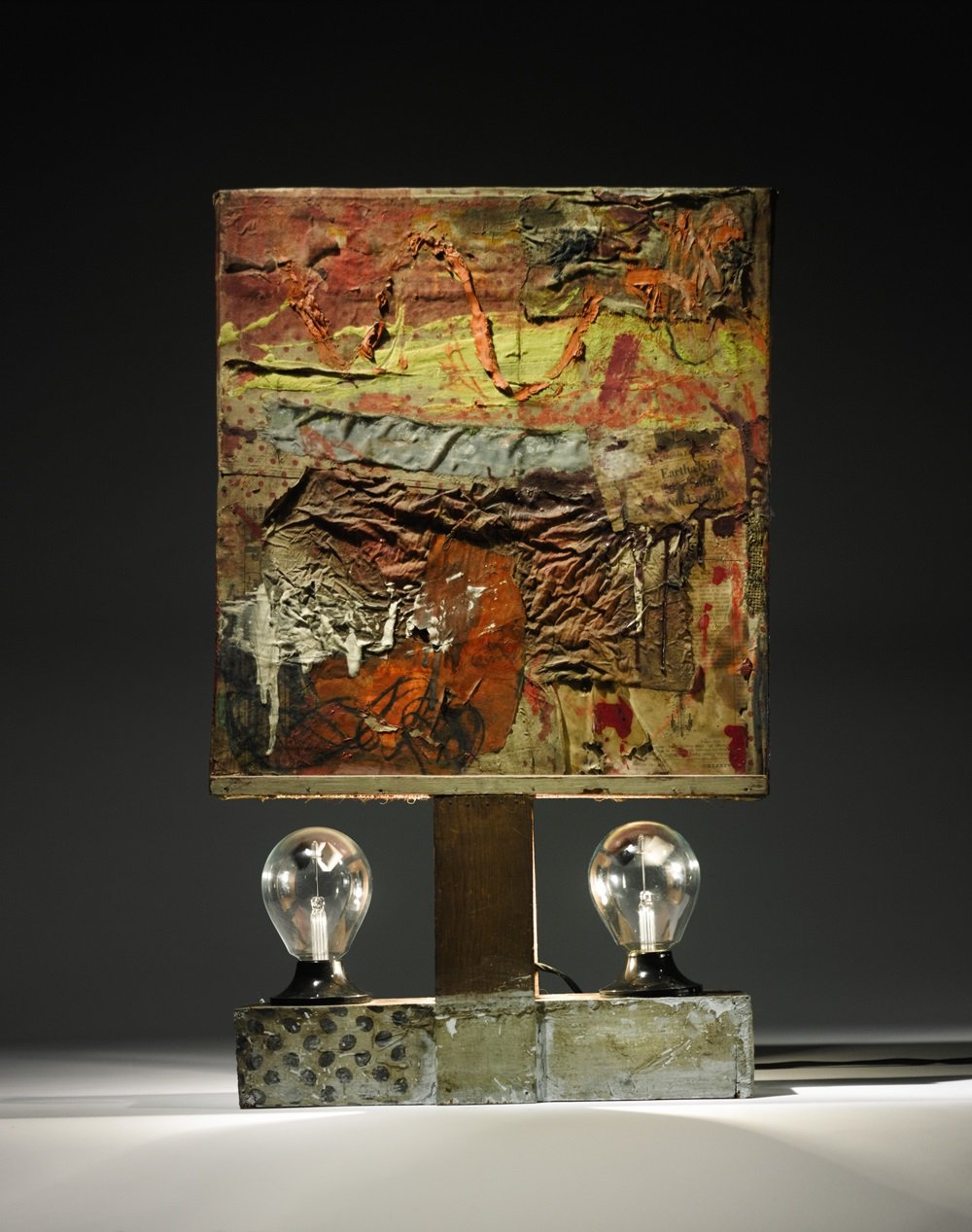
Robert Rauschenberg, Combine (circa 1954) sold for $5.8 million on an estimate of $5–7 million.
Photo: Courtesy Sotheby’s.
Another lot from the Sender collection that performed well here was Keith Haring‘s large painting Untitled (September 14, 1986), which sold for $4.9 million to Amy Cappellazzo, former Christie’s contemporary executive and now a private adviser. She appeared to be bidding for a client via cellphone as she sat in the room. Her competitor was Jeffrey Deitch, also seated in the salesroom with a cellphone glued to his ear. Deitch, who left his New York gallery to become director of MoCA Los Angeles, left after a stormy few years there and appears to be back in the world of art wheeling and dealing. (He bid on several other lots throughout the night.)
Barker opened the evening with a “surprise” for viewers, a dance performance by members of the Paul Taylor dance company, the beneficiary of the proceeds of two Robert Rauschenberg pieces that were being auctioned in the sale. Two male dancers came out and proceeded to perform a short but aggressive dance routine that at times evoked the kind of moves more typically seen in a wrestling ring. At one point, the two men’s movements brought them alarmingly close to an Yves Klein Rélief éponge bleu (RE 51) (1959) hanging on the wall that had a whopping $15–20 million estimate. Several of the Sotheby’s specialists standing at a phone bank nearby looked panicked enough that they might have to leap into action to intervene but fortunately the dancing action moved away from the work. The Klein wound up selling for just under $17 million. As for the Rauschenberg Combine (circa 1954), it sold for $5.8 million on an estimate of $5–7 million.
Falling under the category of top lots with thin bidding was Jean-Michel Basquiat‘s Undiscovered Genius of the Mississippi Delta (1983), which Sotheby’s experts called a “tour-de-force” of Basquiat’s output. It sold for $23.7 million (hammer price $21 million) on what seemed to be a single bid from Alex Rotter, Sotheby’s worldwide head of contemporary art.
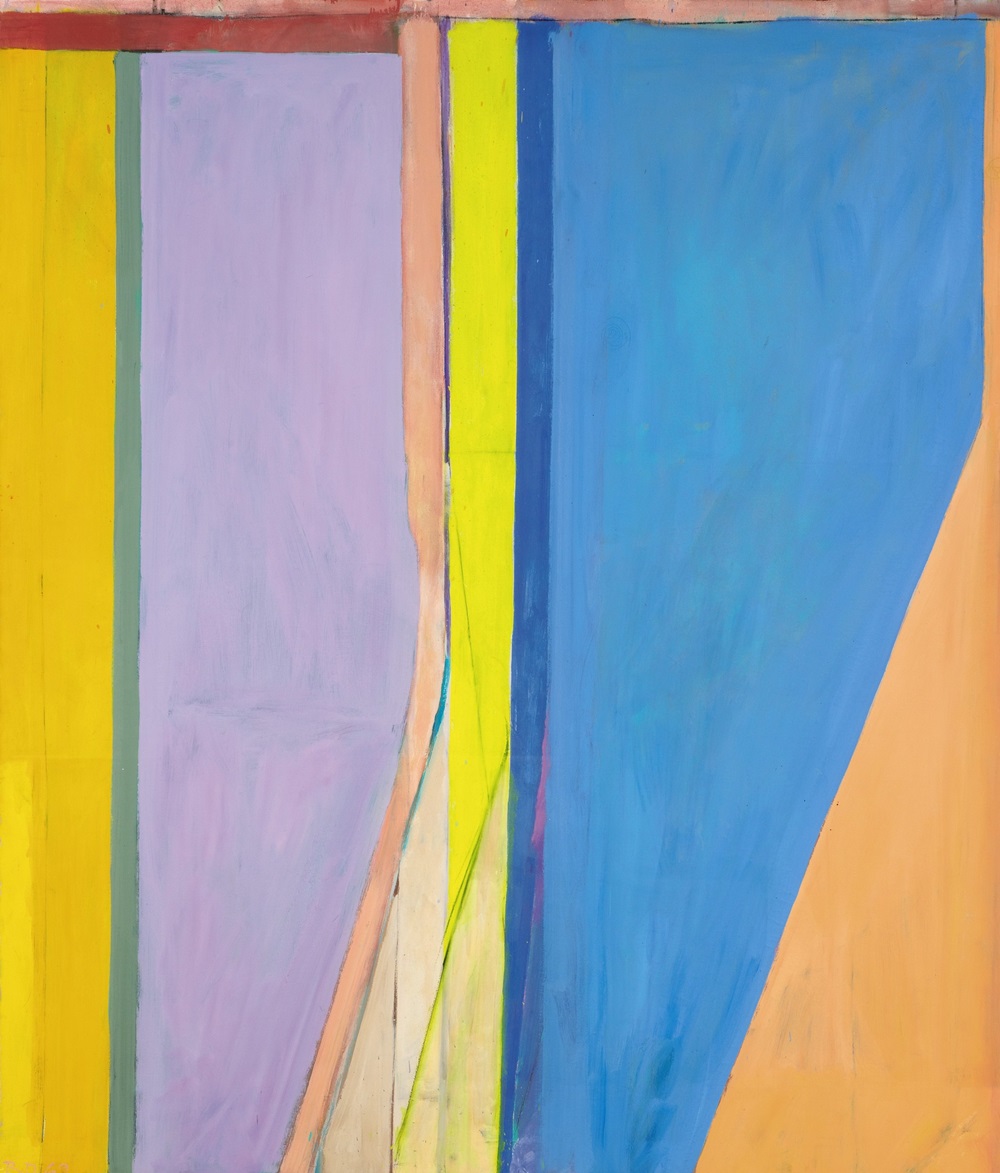
Richard Diebenkorn, Ocean Park #20 (1969) sold for $10.2 million on an estimate of $9–12 million.
Photo: Courtesy Sotheby’s.
Richard Diebenkorn‘s Ocean Park #20 (1969) sold for $10.2 million, right in the middle of its $9–12 million estimate. The work will be included in the forthcoming Richard Diebenkorn catalogue raisonné.
Urs Fischer‘s What If The Phone Rings (2003), an elaborate installation of three nude woman of wax, pigment, and wicks, in three parts, sold for $3.5 million on an estimate of $1.2–1.8 million.
Another offering in the Sender collection was a Richard Prince Ektacolor print, Untitled (Cowboy) (2000), that sold for $3.1 million on an estimate of $1–1.5 million. And Cindy Sherman‘s Untitled #93 (1981) sold for $3.9 million on an estimate of $2–3 million.
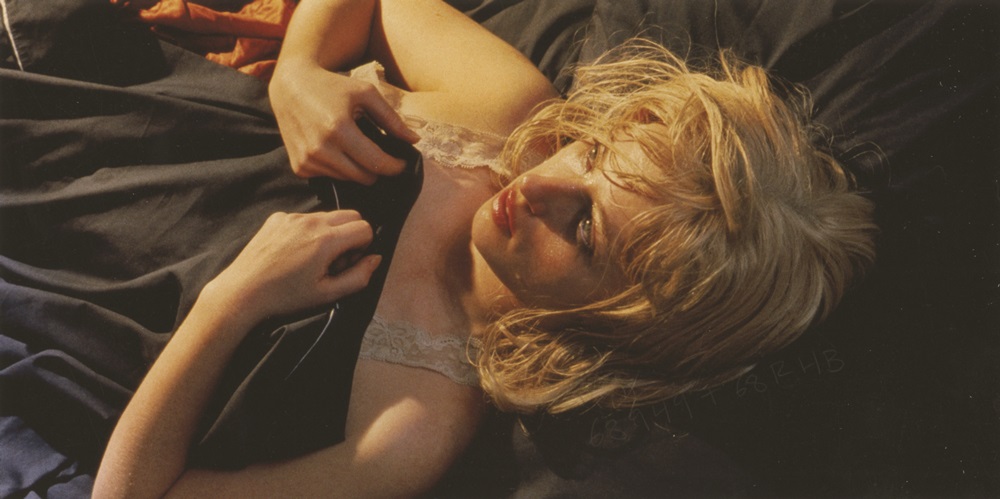
Cindy Sherman, Untitled #93 (1981) from the Sender collection, sold for $3.9 million, well past its estimate of $2–3 million.
Photo: Courtesy Sotheby’s.





